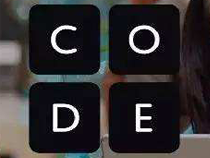在java中,通过java.io.Serializable接口可以实现类的序列化,从而实现类的读写操作。在之前的java上机实验中用到了这个接口,后来做课程设计,又用到了这个功能,不得不说java的这个接口功能十分强大,但是对于十分小白的我。。。功能强大归功能强大,在敲代码的过程中还是遇到了许多错误,所以写在博客里分享一下。
刚接触java时做过这样一个题:
设计学生类Student,属性:学号(整型);姓名(字符串),选修课程(名称)及课程成绩(整型)。编写一个控制台程序,能够实现Student信息的保存、读取。具体要求:(1)提供Student信息的保存功能:通过控制台输入若干个学生的学号、姓名以及每个学生所修课程的课程名和成绩,将其信息保存到data.dat中;(2)数据读取显示:能够从data.dat文件中读取学生及其课程成绩并显示于控制台。
具体代码如下:
复制代码
1
2
3
4
5
6
7
8
9
10
11
12
13
14
15
16
17
18
19
20
21
22
23
24
25
26
27
28
29
30
31
32
33
34
35
36
37
38
39
40
41
42
43
44
45
46
47
48
49
50
51
52
53
54
55
56
57
58
59
60
61
62
63
64
65
66
67
68
69
70
71
72
73
74
75
76
77
78
79
80
81
82
83
84
85
86
87
88
89
90
91
92
93
94
95
96
97
98
99
100
101
102
103
104
105
106
107
108
109
110
111
112
113
114
115
116
117
118
119
120
121
122
123
124
125
126
127
128
129
130
131
132
133
134
135
136
137
138package T4; import java.util.*; import java.io.*; public class Student implements java.io.Serializable{ /** * */ private static final long serialVersionUID = 1L; private String name; private int ID; private String lesson; private int score; public static int numofstu=0; public String getName() { return name; } public void setName(String name) { this.name = name; } public int getID() { return ID; } public void setID(int iD) { ID = iD; } public String getLesson() { return lesson; } public void setLesson(String lesson) { this.lesson = lesson; } public int getScore() { return score; } public void setScore(int score) { this.score = score; } public static void showTips(){ System.out.println("请输入接下来的操作:"); System.out.println("in:录入学生信息"); System.out.println("out:输出学生信息"); System.out.println("exit:退出系统"); } public static void InputInfo(List<Student> stuList){ Scanner in=new Scanner(System.in); while(true){ Student tmp=new Student(); System.out.println("请输入学生姓名,若停止录入请输入exit:"); String name=in.next(); if(name.equals("exit")){ break; } tmp.setName(name); System.out.println("请输入学生学号:"); int ID=in.nextInt(); tmp.setID(ID); System.out.println("请输入学生选修课程名称:"); String lesson=in.next(); tmp.setLesson(lesson); System.out.println("请输入学生课程成绩:"); int score=in.nextInt(); tmp.setScore(score); stuList.add(tmp); numofstu++; } in.close(); } public static void OutputInfo(List<Student> stuList){ FileOutputStream fos = null; ObjectInputStream ois = null; ObjectOutputStream oos = null; try { fos = new FileOutputStream("src/T4/stulist.dat"); oos = new ObjectOutputStream(fos); for(int i=0;i<numofstu;++i){ oos.writeObject(stuList.get(i)); } } catch (IOException e1) { e1.printStackTrace(); }finally{ try { fos.close(); oos.close(); } catch (IOException e) { e.printStackTrace(); } } try{ ois = new ObjectInputStream( new FileInputStream("src/T4/stulist.dat")); while(true){ try{ Student p = (Student)ois.readObject(); System.out.println("姓名:" + p.getName()+" 学号:"+p.getID()+" 选修课程:"+p.getLesson()+" 成绩:"+p.getScore()); }catch(EOFException e){ break; }catch(ClassNotFoundException e){ break; } } }catch (IOException e){ e.printStackTrace(); }finally{ try { ois.close(); } catch (IOException e) { e.printStackTrace(); } } } public static void main(String[] args) { Scanner in=new Scanner(System.in); List<Student> stuList=new ArrayList<Student>(); while(true){ showTips(); String ope=in.nextLine(); if(ope.equals("in")){ InputInfo(stuList); } else if(ope.equals("out")){ OutputInfo(stuList); } else if(ope.equals("exit")){ break; } } in.close(); } }
在student类信息写入文件这个过程中用到了Serializable接口,实现了学生类各属性的序列化写入文件。而后来的数据库课程设计功能需求与student类信息写入文件相似,是要求设计table类用来表示数据库中的数据表,并且要有相应的存储文件实现断电保存数据库中表的信息。
具体代码如下:
复制代码
1
2
3
4
5
6
7
8
9
10
11
12
13
14
15
16
17
18
19
20
21
22
23
24
25
26
27
28
29
30
31
32
33
34
35
36
37
38
39
40
41
42
43
44
45
46
47
48
49
50
51
52
53
54
55
56
57
58
59
60
61
62
63
64
65
66
67
68
69
70
71public void CreateTable() throws IOException { FileOutputStream fos = null; ObjectInputStream ois = null; ObjectOutputStream oos = null; // 将当前表信息写入以该表名命名的.dat文件中 try { fos = new FileOutputStream("src/" + tname + ".dat"); } catch (FileNotFoundException e) { // TODO Auto-generated catch block e.printStackTrace(); } try { oos = new ObjectOutputStream(fos); oos.writeObject(this); } catch (IOException e) { // TODO Auto-generated catch block e.printStackTrace(); } finally { try { fos.close(); oos.close(); } catch (IOException e1) { // TODO Auto-generated catch block e1.printStackTrace(); } } try { ois = new ObjectInputStream(new FileInputStream("src/" + tname + ".dat")); } catch (IOException e1) { // TODO Auto-generated catch block e1.printStackTrace(); } // 测试表信息是否写入文件保存成功 while (true) { try { Table p = (Table) ois.readObject(); //打印表的信息 System.out.println("表名:" + p.tname); System.out.println("列名t类型t长度t列级约束t"); for(int i=0;i<p.col_name.size();++i){ System.out.print(p.col_name.get(i)+"t"); System.out.print(p.type.get(i)+"t"); if(p.len.get(i)==0) System.out.print("-t"); else System.out.print(p.len.get(i) + "t"); //输出列级约束 System.out.print(p.c_constraints.get(i).Judge()); System.out.println(); } System.out.print("表级约束:"); if(p.t_constraints.size()==0){ System.out.println("无"); } else{ for(int i=0;i<p.t_constraints.size();++i){ System.out.println(p.t_constraints); } } } catch (EOFException e) { break; } catch (ClassNotFoundException e) { break; } } }
但是!在运行时出现了编译错误,但经检查没有任何语法错误,在table类声明时也implements了接口java.io.Serializable。
出现编译错误的原因在于,我写的table类中包含一个ArrayList<Colconstraints>类型的属性,而Colconstraints又是一个类,但是这个类并没有实现序列化接口,这就导致了table类在实现类的写操作时出现了错误,导致编译出错。
更改后Colconstraints类代码如下:
复制代码
1
2
3
4
5
6
7
8
9
10
11public class Colconstraints implements java.io.Serializable { /** * */ private static final long serialVersionUID = 1L; public boolean primarykey; public boolean notnull; public boolean null_; public boolean unique; public boolean check; }
解决了这一问题。
最后
以上就是沉默钢铁侠最近收集整理的关于【JAVA】通过实现java.io.Serializable接口启用类的序列化的全部内容,更多相关【JAVA】通过实现java.io.Serializable接口启用类内容请搜索靠谱客的其他文章。
本图文内容来源于网友提供,作为学习参考使用,或来自网络收集整理,版权属于原作者所有。








发表评论 取消回复